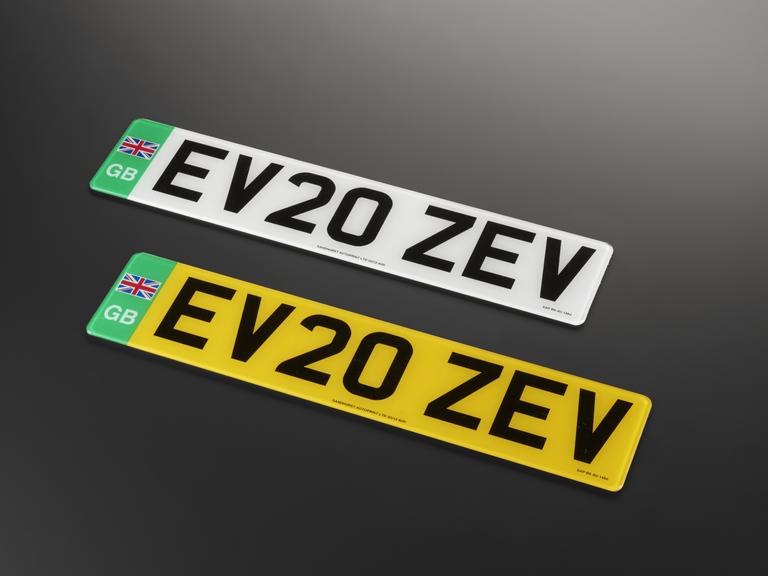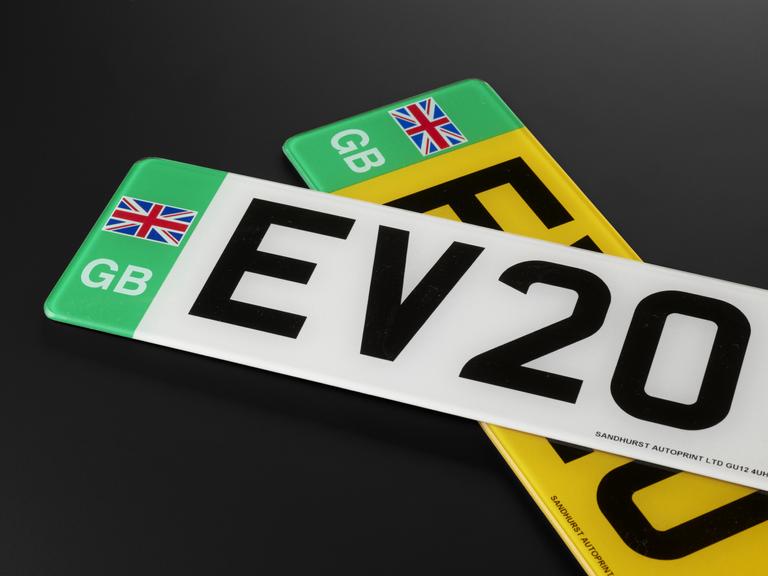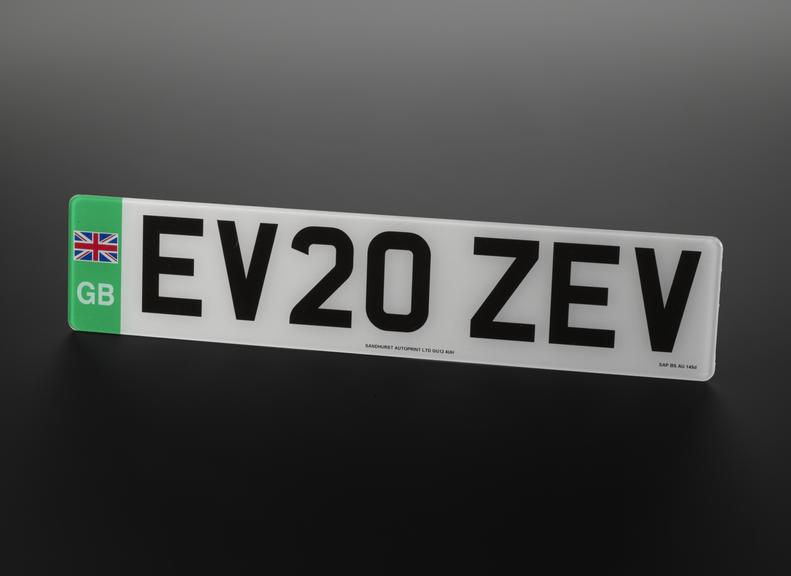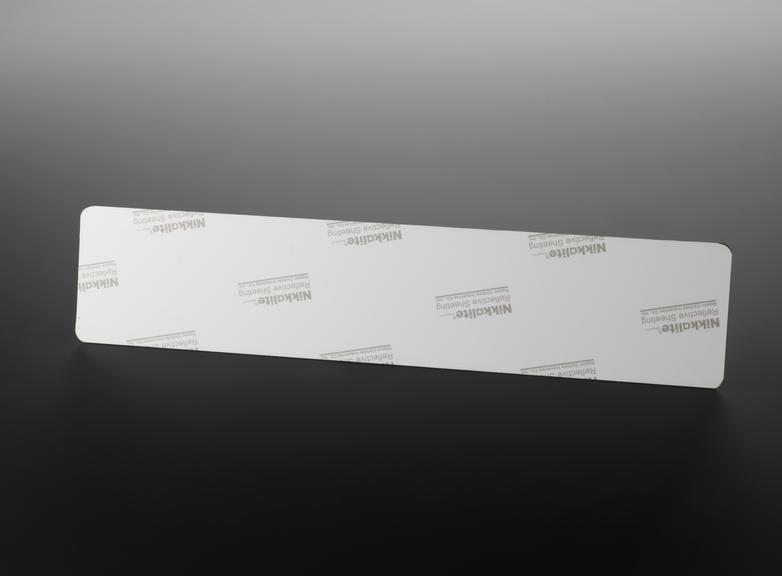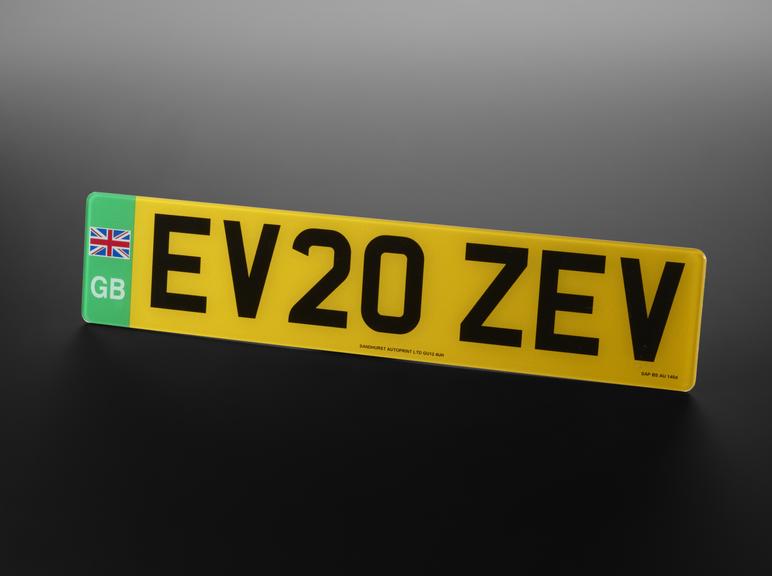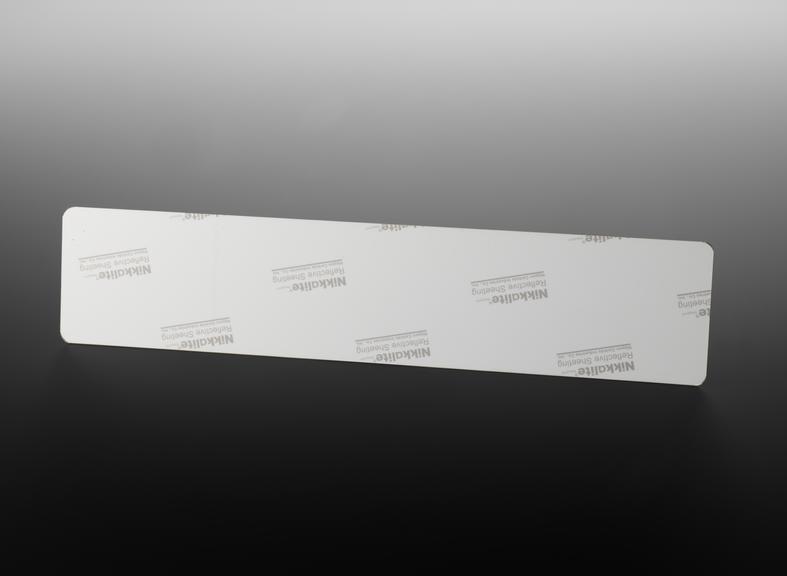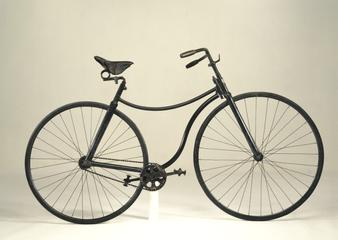Prototype ‘green number plate’ for zero-emission vehicles, 2020
Front promotional ‘green number plate’ (green flash) for zero-emission vehicles (ZEVs) with GB national identifier, registration EV20 ZEV, commissioned by the Office for Zero Emission Vehicles, Department for Transport and manufactured by Sandhurst Autoprint Ltd., Aldershot, UK, 2020
More
This front registration plate is part of a bespoke pair of plates that were commissioned by the Department for Transport to promote the introduction of ‘green number plates’ in Britain for zero emission vehicles (ZEVs).Released in December 2020, the plates' primary function was to increase public awareness and acceptance of ZEVs as part of the British government’s ‘Road to Zero’ strategy and 2050 net zero target for greenhouse gas emissions. The registration ‘EV20 ZEV’ was specifically requested by Grant Shapps, the Secretary of State for Transport, as a nod to zero emissions vehicles.
Since becoming a legal requirement in 1903, the design of British registration plates has changed to account for increasing numbers of drivers and to improve safety, but this is the first time the road management tool has been used to differentiate vehicles based on their environmental impact. Variants of green number plates have been introduced by several national and regional governments including Norway, Hungary, Canada and China to raise awareness and as an identifier for incentives. While green plates identify ZEVs, environmental campaigners have argued that a similar scheme should be used to identify the most polluting vehicles. Such a system has been introduced in some French cities via ‘Crit’air’ vignette window stickers where the emissions standards of vehicles are represented through six colours.
On 8 December 2020 government amended legislation governing number plate design, to allow zero emission vehicles (ZEVs) to display a green flash on the left-hand side of the number plate. Although other designs were considered, the green flash was selected as it did not affect automatic number plates recognition (ANRP) cameras and was easily to implement, complying with the British Standard for number plates. This pair of plates includes the Union Jack and identifying letters ‘GB’. From September 2021, this identifier will be replaced with ‘UK’ following Britain’s decision to leave the EU. Only vehicles with zero tailpipe emissions (e.g. full battery or hydrogen fuel cell electric) are allowed to display the green plates, meaning hybrids and plug-in hybrids are not eligible. The plates are non-mandatory but opt-out, and are available to new and existing qualifying vehicles, including cars, vans, taxis, motorcycles, buses, coaches and heavy goods vehicles.
- Measurements:
-
overall: 111 mm x 520 mm x 5 mm,
- Materials:
- acrylic
- Object Number:
- 2021-2189/1
- type:
- number plates
- Image ©
- The Board of Trustees of the Science Museum, London


